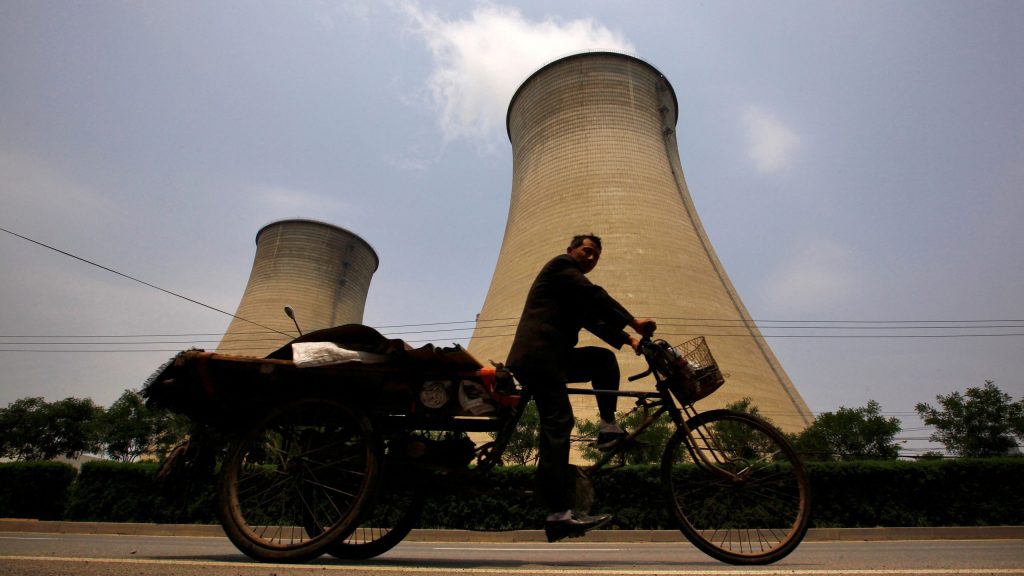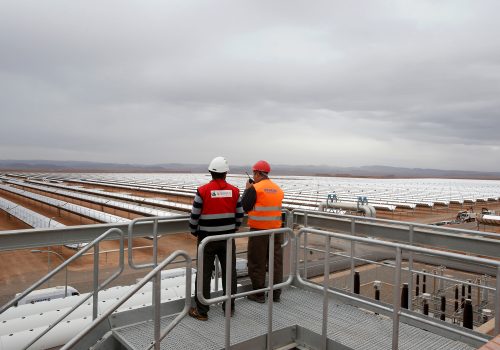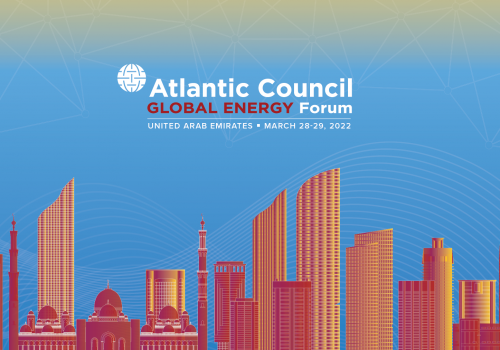This is the first of two pieces on the G7’s vision for a clean green plan. Read the second installment here.
Imagine a policy that simultaneously turns the screws on Russia, sends a powerful message to China not to flex its muscles, and helps save the planet. It sounds like snake oil—but the West already has the bare bones of such a policy.
Think of it as a green “Marshall Plan,” or a green alternative to China’s Belt and Road Initiative (BRI), the massive infrastructure project launched in 2013. The Group of Seven (G7) large industrial nations communicated their vision for this loosely coordinated strategy at their summit last June with an alphabet soup of acronyms.
Its components include the United States’ Build Back Better World (B3W), the United Kingdom’s Clean Green Initiative (CGI)—which I helped shape with a proposal to British Prime Minister Boris Johnson in March 2021—and the European Union’s Global Gateway. Collectively, it is designed to help the Global South (in Asia, Africa, and Latin America) decarbonize their economies rapidly, fighting climate change while preventing them from falling into China’s orbit.
Now, the G7 needs to turn its vision into reality to respond to Russian President Vladimir Putin’s invasion of Ukraine, which has highlighted European dependence on Russian energy. While it’s unclear whether the West will show unity of purpose in driving this plan forward, or if it can mobilize the trillions of dollars in private capital needed to fund it, its geostrategic and planetary rationale is undeniable.
First, it broadens the anti-Russia coalition to include more of the Global South. While rich liberal democracies have united to oppose Putin’s invasion, many poorer countries have been reluctant to condemn it. The war and ensuing sanctions have already jacked up global energy and grain prices, threatening massive hardship for any poor country that is a net importer of these basic commodities.
The embryonic green Marshall Plan speaks directly to two of the Global South’s main needs: to develop its economies and avoid the worst ravages of climate change.
Putin’s invasion of Ukraine makes this plan doubly relevant. Developing and emerging countries desperately need cheaper alternatives to hydrocarbons, but their already rickety finances have taken a further clobbering, so they have little money to invest in renewable energy. The West needs to encourage private capital to flow by targeted financial engineering.
What’s more, it will be hard to cut off Putin’s source of income so long as he sells hydrocarbons to the Global South. While the West could try to bully poor countries into ditching Russia, it would be more effective to help them meet their energy needs in an alternative, cleaner way.
Finally, some emerging countries may be able to produce renewable energy not just for themselves, but also for the West. For example, North African countries are particularly well placed to send clean energy across the Mediterranean and help the EU wean itself off Russian gas.
Countering China
With Washington concerned about Beijing helping Moscow evade sanctions, or supplying it with military equipment, it’s looking to send a powerful message.
But the effectiveness of any economic threats to Beijing will depend on how big a coalition the United States can muster. Chinese President Xi Jinping will calculate that the rest of the West will be reluctant to hit China with sanctions, given how much Western economies depend on trade with his country (China’s economy is ten times the size of Russia’s—and the gap is growing). Xi will also be comforted by the fact that China has developed deep economic and diplomatic ties with large chunks of the developing world through the BRI.
But if the West builds up alternative suppliers of goods and raw materials such a rare earths in the Global South, it will cut its dependence on Chinese imports. Then, Xi won’t be able to blackmail it the way Putin has blackmailed the EU through the bloc’s dependence on Russian gas.
Although China got a head start, the BRI has been losing momentum. Chinese investments into BRI nations, which peaked at $125 billion in 2015, fell to $47 billion in 2020. Recipient countries are finding it hard to service their debts to Beijing. Meanwhile, 35 percent of BRI projects are struggling with corruption, labor violations, environmental pollution, and public protests, according to a recent survey.
This means the West can still catch up. The G7 set out various principles to guide its plan, many of which stand in stark contrast to the BRI: It’s a values-driven vision providing for transparency and sustainability, and a market-led approach instead of China’s reliance on loans from state-owned banks.
The emphasis on harnessing private-sector finance and business is the G7 plan’s competitive edge over the BRI. Meanwhile, the focus on transparency could bring big governance benefits to developing and emerging countries (although some governments in the Global South may balk at adopting this principle).
A clean, green planet
A healthier planet, of course, would be the plan’s other chief benefit. The core idea is to help the Global South make fast and fair transitions to net-zero carbon emissions through partnerships with individual countries, often known as “country-led platforms.” Carbon-intensive industries would be rapidly shuttered and clean ones created, while workers in old industries would be retrained so they could benefit from the transition.
South Africa, a coal-dominated economy, signed the first deal along these lines last year. The United Kingdom, France, Germany, the United States, and the EU agreed to provide it with an initial $8.5 billion in concessional finance—with the idea that much more private capital would flow in. South Africa also announced a net-zero target of 2050, making it one of the few large emerging markets with such an early target (China and India, for example, have set targets of 2060 and 2070, respectively).
Rich countries, especially the United States, will also need to do much more to cut their own emissions. But a rapid transformation of the Global South will make a big contribution to the overall goal as Africa, India, and other parts of the developing world will not need to follow the West and China down the dirty path to growth.
An ambitious G7 plan could even set off a virtuous circle that prods China to decarbonize. If Beijing wishes to stay in the game of providing infrastructure to developing countries, it may respond by further “greening” the coal-, steel-, and concrete-intensive BRI. The result would be a competition between the West and China to green the Global South.
At the very least, the plan can help the West pressure Beijing into to decarbonizing its own export industries. After all, it cannot credibly threaten to switch away from carbon-intensive Chinese exports unless it helps build up alternative green suppliers in other emerging economies.
The EU already plans to apply “carbon tariffs” on some carbon-intensive imports from China and elsewhere. The German government will likely use its G7 presidency to bring other countries with ambitious net-zero plans into a “carbon club,” which would then collectively impose tariffs on non-members.
The snag? It is easy to portray tariffs as a protectionist measure that will keep countries poor, so the EU’s plans could backfire in the Global South. India, Brazil, and South Africa have already expressed their “grave concern” (jointly with China) over carbon tariffs.
But things would look entirely different if the West first helped developing and emerging-market countries build up green industries. Countries that signed partnership deals could then be exempt from the carbon tariffs. They might even start clamoring for tariffs to be imposed on countries such as China that continued to use dirty technology.
The time is now
The Ukraine crisis underlines the importance of the G7’s green Marshall Plan. Currently, the West is paying the price for failing to react to Putin’s invasion of Georgia in 2008 and Crimea in 2014. It should not make the same mistake with China—which is likely a longer-term threat.
And while it will take many years to foster green industrial revolutions in the Global South, Beijing will get the message now if the West drives its plan forward with ambition.
Hugo Dixon is a journalist, campaigner, and entrepreneur. A version of this article was also published by RUSI.
Further reading
Fri, Apr 22, 2022
How the G7 can fund its clean green plan
New Atlanticist By
To bring its green vision to life, the G7 needs to nail down where the money will come from.
Thu, Jan 13, 2022
Treat the Mediterranean like the center of the world again. Europe’s climate security depends on it.
New Atlanticist By Katerina Sokou
Tackling climate change in the vulnerable coastal ecosystem requires a truly regional approach.
Mon, Mar 28, 2022
Meet the global leaders powering the world’s energy transition
Global Energy Forum By
The return of pre-pandemic energy consumption, threats of cyberattacks on critical infrastructure, crises across Europe, and more have dampened hopes for a swift energy transition. But global energy leaders are no less determined.
Image: A man rides his tricycle past the cooling tower and chimneys from a coal-burning power station in Beijing on June 1, 2012. Photo by David Gray/REUTERS



